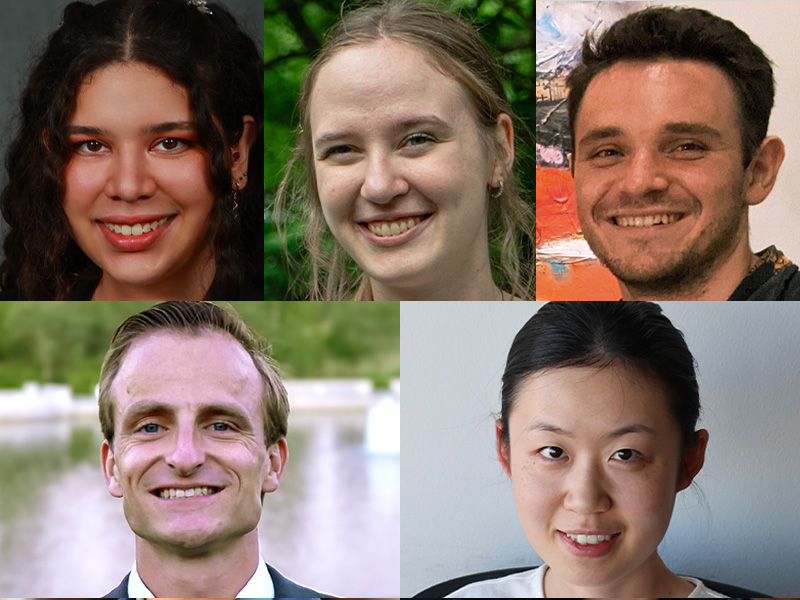Just keep flying
David Peters reaffirms century-old modern theory of lift, rests competing theory

In a twist that might unsettle your in-flight coffee but shouldn't upset your air travel plans, a recent examination casts new light on the century-old theory behind airplane lift.
In response to a splashy but mathematically dubious paper that suggested long-established theories of lift were fundamentally incomplete, David Peters, the McDonnell Douglas Professor of Engineering in the McKelvey School of Engineering at Washington University in St. Louis, developed a fresh approach to reaffirm classical airfoil theory. So fret not, frequent flyers, despite the turbulence in theoretical aerodynamics, the fundamental principles ensuring your safe and smooth flight remain robust and reliable.
While Peters hasn’t yet solved the other issues plaguing airlines and making recent headlines, he and longtime collaborator Robert Ormiston, emeritus scientist at the U.S. Army Combat Capabilities Development Command, Aviation & Missile Center, employed Gauss’ principle of least constraint to address fundamental questions about the lift of a two-dimensional airfoil in ideal, incompressible fluid flow, a core concept in aerodynamics. Their results align with the classical, Newtonian derivation of aerodynamic theory for ideal fluid flow and reaffirm the longtime practices of aerospace engineers.
The findings of Peters and Ormiston, both fellows of the American Institute of Aeronautics and Astronautics (AIAA), were published Nov. 22, 2024, in the AIAA Journal. Their paper also takes aim at a recent alternative theory, which proposes a first-principles closure condition, discarding validated precedent. The team’s research discredits this new theory, reinforcing the idea that constraining assumptions about how fluid flows around a wing are indispensable for accurately describing airfoil lift.
In the study, the researchers emphasize the mathematics of their reexamination of the classical theory of lift and how their analysis disproves the alternative theory.
“The math is a slam dunk,” Peters says, but he also points to lift – and aerodynamicists’ understanding of it – as a foundation that shouldn’t be taken for granted.
“Lift is the most fundamental thing in aeronautics, but we can’t fully explain it,” Peters said. “The theory of lift on a wing goes back over a hundred years, but it’s incomplete. We have to make a practical assumption that air comes off the trailing edge of a wing smoothly. That assumption is known as the Kutta condition, and it allows us to design airplanes. We know it works, we have experimental proof that it’s a good assumption – namely, we can fly! – but we don’t have a physics-based argument for why it works.”
The incompleteness of classical airfoil lift theory as it relates to potential flow has left a nagging space for aerodynamicists and mathematicians for years. Indeed, it is this space that left open the door for the mathematically questionable alternative theory, suggesting long-established theories of lift were fundamentally incorrect and making waves in the theoretical aerodynamics world. While theorists would like to find an elegant, first-principles solution, Peters says the math simply doesn’t allow it.
“Everybody knew this thing was crazy wrong, but we couldn’t figure out why,” Peters said.
To find the answer, Peters employed Gauss’ principle, a cornerstone in theoretical physics, to gain a fresh perspective on how fluid flow behaves in ideal conditions and re-derive the fundamental theory of lift. According to Gauss’ principle, the pressure field within the fluid is divided into two components: a constraint pressure field, which upholds physical limitations on the system – specifically, the air flows continuously and does not penetrate the wing surface – and an impressed pressure field, which can be chosen based on considerations about the specific situation being studied –– considerations beyond the flow constraints.
One of the most striking conclusions from the study is the confirmation that classical airfoil theory – based on potential flow assumptions – is not only verifiable through an alternative mathematical approach but also remains incomplete. The analysis shows that no closure condition can be derived from first principles within the potential flow framework. This disproves the competing theory that had been proposed and reaffirms the necessity of the empirical Kutta condition in classical aerodynamics.
“We were able to verify with Gauss what we already knew, and what people have been saying for 100 years based on Newton’s laws,” Peters said. “It’s a new way of looking at an old problem. If you use the wrong theory, then you won’t be able to build airplanes. We all know that if you use a bungee cord to hold a piece of plywood to the roof of your car and start driving, it’s going to fly off. If the math doesn’t agree with even that most basic experiment, then we must fix the math.”
“We still want to get the Kutta condition from first principles, but for now, we’ve found another way to come to the same conclusion,” Peters added. “Gauss’s principle is equivalent to Newton’s laws, and it’s good to affirm that all is right with the world.”
Peters DA and Ormiston RA. Application of Gauss’ Principle to the classical airfoil lift problem. AIAA Journal. Nov. 22, 2024. DOI: https://doi.org/10.2514/1.J064434




